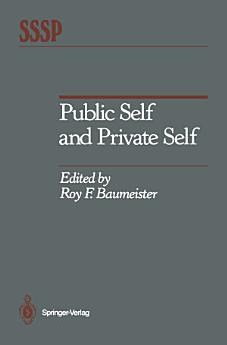Public Self and Private Self
2012-12 · Springer Science & Business Media
El. knyga
257
Puslapiai
reportĮvertinimai ir apžvalgos nepatvirtinti. Sužinokite daugiau
Apie šią el. knygą
Psychology has worked hard to explore the inner self. Modem psychology was born in Wundt's laboratory and Freud's consulting room, where the inner self was pressed to reveal some of its secrets. Freud, in particular, devoted most of his life to explor ing the hidden recesses inside the self-hidden even from the conscious mind, he said. From Freud's work right down to the latest journal article on self-schemata or self-esteem, psychologists have continued to tell us about the inner self. More recently, psychology has turned some of its attention to the outer self, that is, the self that is seen and known by other people. Various psychologists have studied how the outer self is formed (impression formation), how people control their outer selves (impression management), and so forth. But how is the outer self related to the inner self? There is an easy answer, but it is wrong. The easy answer is that the outer self is mostly the same as the inner self. Put another way, it is that people reveal their true selves to others in a honest and straightforward fashion, and that others accurately perceive the individual as he or she really is. Sometimes it works out that way, but often it does not. The issue is far too complex for the easy answer.
Apie autorių
Roy F. Baumeister is the Eppes Eminent Professor of Psychology and head of the social psychology graduate program at Florida State University. He received his Ph.D. in social psychology from Princeton in 1978 and did a postdoctoral fellowship in sociology at the University of California at Berkeley. Baumeister has worked at Case Western Reserve University, as well as the University of Texas, University of Virginia, Max-Planck-Institute, and the Center for Advanced Study in the Behavioral Sciences. Baumeister's has received research grants from the National Institutes of Health and from the Templeton Foundation. His research spans the areas of self and identity, self-regulation, interpersonal rejection and the need to belong, sexuality and gender, aggression, self-esteem, meaning, and self-presentation. He is the author of nearly 400 publications. His books include Evil: Inside Human Violence and Cruelty, The Cultural Animal, Meanings of Life and Willpower: Rediscovering the Greatest Human Strength.
Įvertinti šią el. knygą
Pasidalykite savo nuomone.
Skaitymo informacija
Išmanieji telefonai ir planšetiniai kompiuteriai
Įdiekite „Google Play“ knygų programą, skirtą „Android“ ir „iPad“ / „iPhone“. Ji automatiškai susinchronizuojama su paskyra ir jūs galite skaityti tiek prisijungę, tiek neprisijungę, kad ir kur būtumėte.
Nešiojamieji ir staliniai kompiuteriai
Galite klausyti garsinių knygų, įsigytų sistemoje „Google Play“ naudojant kompiuterio žiniatinklio naršyklę.
El. knygų skaitytuvai ir kiti įrenginiai
Jei norite skaityti el. skaitytuvuose, pvz., „Kobo eReader“, turite atsisiųsti failą ir perkelti jį į įrenginį. Kad perkeltumėte failus į palaikomus el. skaitytuvus, vadovaukitės išsamiomis pagalbos centro instrukcijomis.








